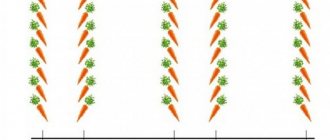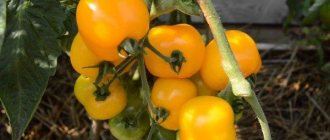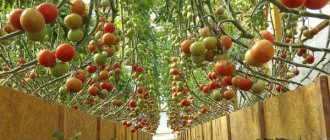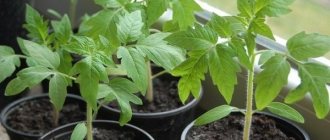Diagnosis of the problem
Finding out the reason for the appearance of condensation in the greenhouse is half the solution to the problem. The main factors for the formation of droplets on polycarbonate:
- Temperature difference between inside and outside to the so-called “dew point”. Occurs during periods of seasonal cold snaps or when the atmosphere inside is overheated.
- Poor ventilation. Even with moderate humidity, there must be normal air circulation in the greenhouse, otherwise condensation cannot be avoided.
- Planting density. Each crop has its own density. But it cannot be more than 3 copies per 1 sq. m.
- Poor quality plant care. First of all, untimely removal of side shoots, wilted and fallen leaves.
- Watering errors.
Condensation in the greenhouse can be removed with a dry cloth. But he will appear again soon. Uncollected drops will fall on the leaves and cause their burns in the coming afternoon. Uncontrolled moisture in the garden leads to disease.
Attention! Condensation in a greenhouse poses the greatest danger to cucumbers.
Why does condensation appear in a greenhouse?
No matter what kind of greenhouse you build, you will still have to face this problem. To a greater or lesser extent, condensation will form both in a greenhouse made of polycarbonate and from ordinary film. There are several reasons for this phenomenon:
- At dawn, when the first rays of the sun hit the walls of your greenhouse, there is a large temperature difference between the air outside and inside the greenhouse. It is at this time that drops of water appear on the walls and ceiling.
- Plants, of course, are not people, but they also breathe. During respiration, they release carbon dioxide and water.
- Moisture evaporates from the leaves of plants and from the soil, which can also settle on the film or polycarbonate.
These harmless drops of water are dangerous for the inhabitants of greenhouses. Excess moisture contributes to the spread of various infections, which can cause diseases, and in more serious cases, the death of plants.
Correction of temperature factors
The greenhouse, by design, accumulates heat, but sometimes there is too much of it. The following will help deal with excess to avoid condensation:
- Artificial shading of a greenhouse in hot weather. For this, special nets or ordinary branches are used.
- Planting shrubs near the building.
- Regular ventilation, even at night.
Advice. It is not advisable to use the door for ventilation. Cool air coming from below will damage the crop.
Normal temperature levels inside the greenhouse for most crops are:
- in the daytime - from +16 to +25 °C;
- at night - a little lower.
From spring to the peak of summer, heating is gradually brought up, as it happens under natural conditions for plants. Do not forget to monitor the heating of the soil. It can be the same temperature as air or slightly colder.
If you plan to grow a vegetable garden in cold weather, insulate the greenhouse to prevent condensation from forming. First, seal all holes and cracks with a good quality sealant. Then proceed with one of the measures:
- Cover the inside of the building with film. The material should not fit tightly to the ceiling and walls. A cushion is formed between it and the solid polymer. It will additionally retain the cold and protect against condensation.
- Place sheets of insulating material under the beds.
- Build a foundation to a depth of about 50 cm. Type - any.
- Heat the greenhouse to prevent condensation from accumulating inside. It is not necessary to choose electric or steam. There are cheaper alternatives. For example, bioheating. Just do not overheat the roots of the crops.
Removing condensation
It is possible and necessary to deal with condensation. To do this, you can apply a number of technical solutions that relate to the installation of ventilation and heating devices in the greenhouse. Changing the plant watering regime can also significantly reduce the effect of vaporization.
Ventilation devices
To get rid of steam, which turns into water when it comes into contact with plastic, vents are used. It is not recommended to use doors for ventilation. Cold air from the lower layer can greatly harm greenhouse crops.
The rules for creating a ventilation system are as follows:
- Vents for air intake must be installed on the gables of greenhouses at a height of at least 1 meter. They can be mounted both on the wall and in the doors.
- To allow moist air to escape, transoms should be installed as close to the ceiling of the building as possible.
- To ensure a uniform microclimate in the room, it is recommended to install exhaust transoms every 2-3 meters.
Advice
: Windows can be made with manual or automatic opening mechanisms. If the greenhouse is located next to the house where the owner permanently lives, then there are sufficient devices for opening the windows manually. In cases where the greenhouse can remain unattended for one or several days, automatic ventilation systems are required.
These include the following devices:
- Forced ventilation system. They consist of thermal relays and electric fans. They can operate from an industrial electrical network or from batteries.
- Bimetallic devices. Using different coefficients of thermal expansion of two types of metal, a device was created that opens the window when heated and closes it when cooled.
- Hydraulic cylinders. The operation of such devices uses the property of liquids to change their volume when the temperature changes.
Ventilation can minimize the likelihood of condensation.
Heating greenhouses
The use of heaters of various types will ensure that condensation does not form. Considering that most greenhouse plants love moist soil and dry air, this will create good preconditions for obtaining a bountiful harvest. Various types of devices can be used for heating.
These include:
- oil radiators;
- electric heaters;
- heating cable that can be run along the floor and roof of the greenhouse;
- gas-burners;
- ultraviolet heaters;
- fan heaters;
- solid fuel stoves;
- water heating from the heating system of the house.
To maintain the optimal temperature, you can install a thermostat that will turn the devices on and off. It should be noted that electrical appliances are quite expensive to operate, and fuel-powered devices require constant monitoring.
Irrigation mode
Each greenhouse crop requires a certain amount of moisture for normal development. Both a lack of water and its excess can negatively affect the development of plants.
One of the factors that should be taken into account when planning irrigation is the thermal insulation qualities of cellular polycarbonate. It has very low thermal conductivity, which leads to a significant temperature difference between the inside and outside of the greenhouse.
Based on this, you should not water the plants before dark. The heat remaining in the greenhouse after daytime heating causes abundant evaporation of water from the soil. In combination with the evening and night coolness, this causes severe fogging of the internal surfaces of the greenhouse. To avoid excess moisture, you can leave the windows (but not the doors) slightly open overnight.
On a note
: The optimal time for watering plants in polycarbonate greenhouses is the morning. To do this, it is best to use warm, settled water. In the evening, watering can be done in small quantities, and only in cases where the day was very hot and the plants urgently need moisture.
It is strictly not recommended to water during the daytime in bright sunshine. This can cause overheating of the root system and death of plants. Light mulch has a good effect of reducing evaporation from the soil. If condensation forms in the greenhouse in the evening, it must be ventilated or warmed until it disappears. Cold drops and excessive dampness can harm plantings.
Greenhouse plantings require periodic maintenance. It is necessary to collect dead leaves from the ground and pull out weeds. Sick plants should be removed immediately to prevent infection of others. In heavily overgrown plants, it is advisable to remove side shoots and, in some cases, thin out. The recommended concentration is up to 3 bushes per 1 m².
Video about arranging automatic ventilation of a greenhouse
Hello, friends.
When I installed a polycarbonate greenhouse, I didn’t think that problems would appear where I didn’t expect them. I won’t talk about soil, seedlings, fertilizing, etc. now. I was almost ready for this (theoretically). But one morning I saw that the inside of the polycarbonate was covered with small droplets - condensation! Well, you never know - the night was cold or something else... But the next day it was the same, and the next. But dampness in a greenhouse is bad! I knew this well. But gradually I found out where condensation in a greenhouse comes from, what its danger is and how to deal with this phenomenon.
At night, the temperature outside and in the greenhouse gradually levels out, and by morning it becomes almost the same. But the sun appears, and the air inside the greenhouse begins to quickly warm up. But the outer surface of the polycarbonate (or film) is still cold, and the plants themselves and the soil have not yet had time to warm up. The moisture contained in the air (and it is always there) begins to accumulate on the surface, like on the lid of a pan when water boils. There are no other reasons for the appearance of condensation other than temperature changes - the law of physics. Of course, its quantity depends on the level of humidity, but that is another question.
Ventilation and watering
Poor ventilation directly affects the increase in humidity inside the structure and the formation of condensation. Any greenhouse provides at least one window. It is important to place it correctly - closer to the top. When using, do not create drafts! Automatic ventilation systems that open and close the vents depending on the temperature inside the greenhouse set by a person have proven themselves well. In this case, condensation is unlikely to occur.
Attention! It is necessary to regularly ventilate a year-round greenhouse not only in summer, but also in winter.
There are two basic rules in greenhouse irrigation:
- Strictly follow the standards for a particular plant. As autumn approaches, as the heat subsides, reduce these doses as well. The excess will evaporate from the soil and settle as condensation.
- Carry out the procedure only in the morning. Evening watering is a mistake.
Eliminating condensation in a polycarbonate greenhouse (video)
The formation of condensation in polycarbonate greenhouses is a common phenomenon that negatively affects the growth, development, and fruiting of plants. Condensation forms on the ceiling and walls of the greenhouse. Excessive humidity and temperature changes contribute to the formation of moisture, which leads to the development of pathogenic microbes and bacteria. Condensation can be removed using special devices or traditional methods. Condensation can form in both summer and winter. It is important to properly organize the heating system and watering the plants - then excessive humidity can be avoided.
Adding an article to a new collection
Any gardener dreams of a good harvest and tries in every possible way to protect his pets from problems. But even a greenhouse does not guarantee complete safety for vegetables. One of the main greenhouse disasters is condensation. Let's learn to fight it.
Drops of water on the pipes, foggy windows in the apartment, dew on the grass - all these are signs of the same phenomenon. Its name is condensate.
Humidity Reduction Techniques
Traditional methods of dealing with condensation in a greenhouse, tested in practice:
- Make the beds high. Raise them 40 cm, and the plants will lose less moisture due to cooling.
- Protect the soil from intense evaporation of moisture, which turns into condensation. Cover the surface with lutrasil or mulch. Light mulch can only be used in spring. In summer it will slow down the warming of the soil. Although sometimes it is still used - against overheating.
- Cover the bed with a layer of film. Transparent, but not dark! In hot weather, you can add additional mulch on top.
- The critical temperature difference is about 10 °C. It gets cold outside in the summer - open the window and slightly lower the heating inside. Ventilation at night is important.
Another technique helps to physically get rid of condensation:
- fill the container of a regular spray bottle with clean water;
- add a little water-repellent WD-40 solution there (4-6 second presses on the spray can);
- wipe off the condensation with a cloth;
- spray the interior surfaces of the greenhouse.
The drops stop collecting on the polycarbonate, and as they accumulate, they flow down. This or any other method of removing condensation will not help eliminate the cause of high humidity. Therefore, place the main emphasis on diagnosing and solving the problem.
What is condensate and where does it come from?
Water, as everyone remembers from a school physics textbook, can be in three states: solid, liquid and gaseous. At the same time, she easily moves from one to another. Air contains water in the form of gas. The higher the temperature, the more water vapor. When the temperature begins to drop, water changes from a gaseous state to a more familiar state - liquid. This is how condensation forms. Thus, condensate is a product of the transition of a substance from gaseous to liquid form.
Perhaps the only place where condensation can bring joy is dewy grass. In all other cases, this is a problem. Today we will look at ways to get rid of condensation in greenhouses.
- Why do plastic windows sweat and is it possible to get rid of condensation?
We reveal the secrets of how to prevent condensation from collecting on the glass.
Features of installation of cellular polycarbonate
In order for polycarbonate to fully exhibit all its properties, it must be installed correctly. The most common option is. The ideal material for the frame would be galvanized metal arches. They will resist environmental influences and will not bend under the weight of snow or strong winds.
The thicker the sheets of cellular polycarbonate in the future greenhouse, the better. It is ideal to use a material with a special layer that prevents the formation of condensation on the side that will become internal during installation. For a greenhouse, you can use different polycarbonate: white, transparent or colored. Everything will depend on the purpose, on what plants will be grown in it. If the greenhouse is intended for growing different plants, then it is best to use a transparent one.
Cellular polycarbonate sheets used to construct a greenhouse must be installed with the protective layer facing outward. It is not difficult to identify it; the film bears special inscriptions made by the manufacturer. This film should be removed only after all installation work has been completed. The cells must be positioned vertically. This will allow the condensation that has formed inside to flow freely out.
You can use a specialized film against condensation.
The ends of the panels must be closed. The upper ones are closed, and the lower ones are perforated. This will protect the panels from dust and allow condensation to flow freely. If the structure is arched, then perforated tape is used for both ends.
To install the greenhouse, a polycarbonate profile is used: detachable and one-piece, as well as special fasteners: self-tapping screws and thermal washers. All holes made in polycarbonate boards must be 1-1.5 mm wider than the fastening material to ensure thermal expansion of the material.
If necessary, provide windows for ventilation. The window can be located on the wall opposite the door, on the sides of the structure or on the top.
Return to contents
How to get rid of condensation
- The best way to get rid of condensation and excess humidity is ventilation. Try to open doors and windows as early as possible. And if possible, do not close them at all at night.
- Do not create conditions for increased humidity yourself. It's better to water in the morning! Then the water that is not absorbed into the soil will evaporate and disappear within a day.
- - a way to reduce humidity in a greenhouse. Water after watering under mulch will not “spontaneously” evaporate and accumulate in the air.
- Even if some of the moisture (condensation) gets on the plants, it will not cause much harm if the plants are free, they are well ventilated and dry. So stop thickening your plantings!
- Try to avoid temperature changes in the greenhouse - this is both the cause of condensation and the cause of plant disease.
Good luck in the garden!
Most modern greenhouses, both industrial and country houses, are finished with polycarbonate sheets. This material is famous for its high strength, good light transmittance and fairly long service life.
The use of modern, high-quality fastening and insulation materials leads to complete sealing of the greenhouse. In addition to a lot of positive aspects, this can also lead to such an undesirable phenomenon as condensation.
We disinfect
The most effective measures in this case are preventive. Change the soil in the greenhouse at least once every two to three years, water it before planting with special disinfecting solutions. Do not bring soil from the garden into the greenhouse, but only from places where there are no cultivated plants, for example, from the forest. You will find the most favorable soil for plants under bird cherry; in such soil nothing bad will grow for several years in a row. By the way, adding bird cherry leaves to compost greatly contributes to its disinfection.
Wash the polycarbonate inside the greenhouse with soap and a weak solution of potassium permanganate, this will kill spores of fungal diseases. Before planting seedlings, such cleaning is mandatory, and during the summer you need to do the same at least twice, especially while the plants are still small. A mop, a rag, a bucket - that’s all the “tools”. At the same time, you will increase transparency.
And the most effective measure, which is right on the surface, but which for some reason not a single dacha mega-portal mentions:
Get into the habit of wearing a work coat when entering the greenhouse. Hang such protective clothing right in the greenhouse, on a nail by the front door.
It is none other than you yourself, without knowing it, who brings 90% of all harmful pathogens inside. We went through the currant plantings - here you have spider mites, we went and checked the potatoes - welcome, late blight! And so on.
In the high-risk zone, agricultural personnel work only in overalls. Whether it is young animals, an apiary, or an industrial greenhouse... And you follow this good example, the result will not keep you waiting. Plants under any roof, including those under polycarbonate, have weakened immunity compared to those in free air, so they must be treated accordingly.
Mechanical ventilation
Mechanical (forced) ventilation systems for winter gardens show better performance results when precise compliance with temperature and humidity conditions and care for capricious, exotic plants is necessary.
There are two types of forced ventilation of the winter garden:
- transverse Supply and exhaust openings are installed inside the side surfaces of the translucent structure. The main condition is that the distance between the openings must be maintained to 6 m, otherwise the air may overheat before reaching the exhaust opening, which will negatively affect plants deprived of fresh air flow;
- jet. Ventilation openings are located according to the natural flow of air masses - from top to bottom. Supply openings are located inside the front wall near the floor. The exhaust is carried out at the ridge of a gable roof, designed in such a way that the superheated exhaust air exits through a specially arranged opening. Condensation formed from excess temperature and moisture remains there.
It is also possible to install fans inside the exhaust openings, which mechanically remove the hot air flow. They are produced in various capacities; a qualified specialist will help you choose the one you need.
Mechanical devices are often accompanied by software that allows you to set the necessary parameters for temperature and humidity conditions. The necessary data is entered into the computer (start time, end time of ventilation, construction materials, solar placement, etc.), based on which the program builds an optimal ventilation mode.
We water wisely
Condensation occurs on polycarbonate only in cases of high humidity. And moisture in the air comes mainly from over-watered soil. There are several methods:
- strictly dose watering, doing it early in the morning;
- install a drip irrigation system;
- cover the entire area of soil in the greenhouse with covering material; This is done during planting of seedlings, cuts are made in the fabric and plants are planted in them;
- well forgotten old: ditch irrigation method; Only the ditch in the greenhouse needs to be covered with something (a board) to reduce evaporation.
Ventilation devices
The simplest device for getting rid of steam, which turns into water in contact with the cold walls of the greenhouse, is. It is not recommended to use doors to ventilate greenhouses, as cold air flowing through the bottom of the greenhouse can harm the plants.
- Vents for air supply should be installed on the gables of the structure. The height must be at least 1 meter from the floor. Windows can be installed both on the wall and on the door of the greenhouse.
- In order for moist air to escape from the greenhouse, transoms should be installed closer to the ceiling of the greenhouse.
- To maintain an ideal microclimate inside the greenhouse, it is recommended to install transoms every 2-3 meters.
Vents in greenhouses can be made with either manual or automatic opening. If you live next to a greenhouse and it is not difficult for you to ventilate the greenhouse manually, then you can safely install the simplest manual vents.
If you don’t want to bother with this matter, then you should resort to automating this process. Such equipment will cost much more than a regular window, but with its help you will save your time, and you will also be able to safely leave the greenhouse unattended for several days.
The automatic ventilation system includes the following devices:
- Forced ventilation system. Such a system, powered by an electrical network, consists of a thermal relay and electric fans that turn on when a set temperature is reached.
- Bimetallic devices. In this case, the coefficient of thermal expansion of two types of metal is used. This device opens the window when heated, and closes it when properly cooled.
- Hydraulic cylinders. The operating principle of this device is to use the properties of a liquid to change its volume when the temperature changes.
Regular ventilation reduces the risk of condensation to a minimum.











